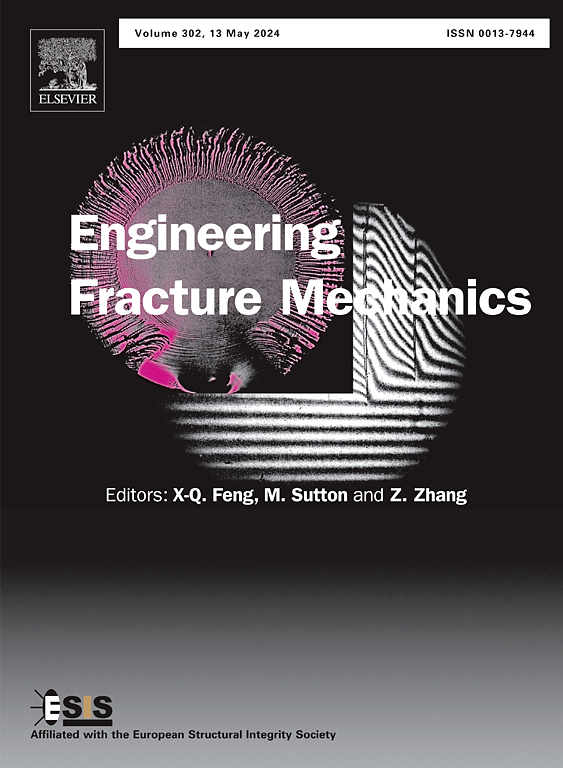High cycle fatigue limit assessment of foreign object damaged aerofoil blades considering the residual stress induced by impact
IF 4.7
2区 工程技术
Q1 MECHANICS
引用次数: 0
Abstract
Foreign object damage (FOD) is a critical factor that impacts the operational safety of aero-engine fan blades and is both frequent and inevitable. Therefore, it is necessary to develop an accurate high cycle fatigue (HCF) limit prediction model to enhance the reliability of assessment criteria for fan blades after FOD. Notch and residual stress are the key factors affecting HCF performance. In this paper, FOD tests were conducted to obtain notched airfoil blades and tested their HCF limits. Furthermore, the residual and vibration stress near the aerofoil blade notch were obtained by combining numerical simulation and experiments. The evolution of the residual stress was determined so that the actual stress field near the notch was accurately reconstructed, and the location of the dangerous point was obtained then, based on the theory of critical distance (TCD), an HCF limit prediction model was established and compared with the current Peterson and TCD models without considering residual stress. The results show that the TCD model considering residual stress can accurately predict the HCF limit of FOD aerofoil blades, with an error of 9.70 %±8.66 %, which is lower than the Peterson model (19.60 %±17.56 %) and the TCD model without residual stress (16.58 %±11.62 %).
考虑到冲击引起的残余应力,对异物损坏的机翼叶片进行高循环疲劳极限评估
本文章由计算机程序翻译,如有差异,请以英文原文为准。
求助全文
约1分钟内获得全文
求助全文
来源期刊
CiteScore
8.70
自引率
13.00%
发文量
606
审稿时长
74 days
期刊介绍:
EFM covers a broad range of topics in fracture mechanics to be of interest and use to both researchers and practitioners. Contributions are welcome which address the fracture behavior of conventional engineering material systems as well as newly emerging material systems. Contributions on developments in the areas of mechanics and materials science strongly related to fracture mechanics are also welcome. Papers on fatigue are welcome if they treat the fatigue process using the methods of fracture mechanics.

 求助内容:
求助内容: 应助结果提醒方式:
应助结果提醒方式:


